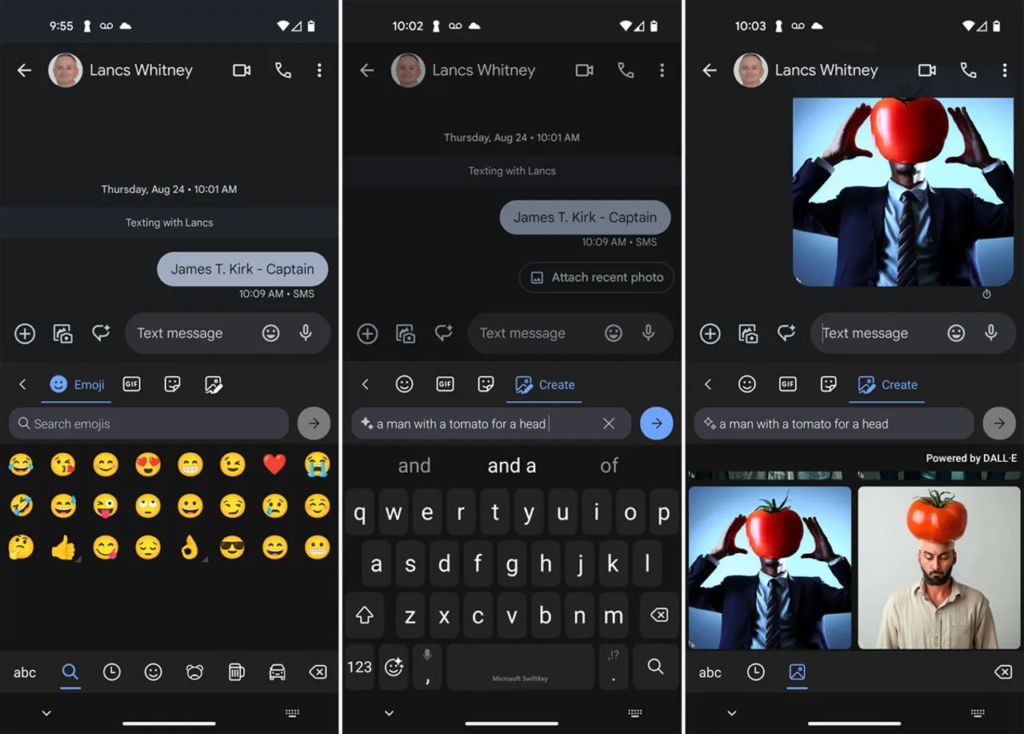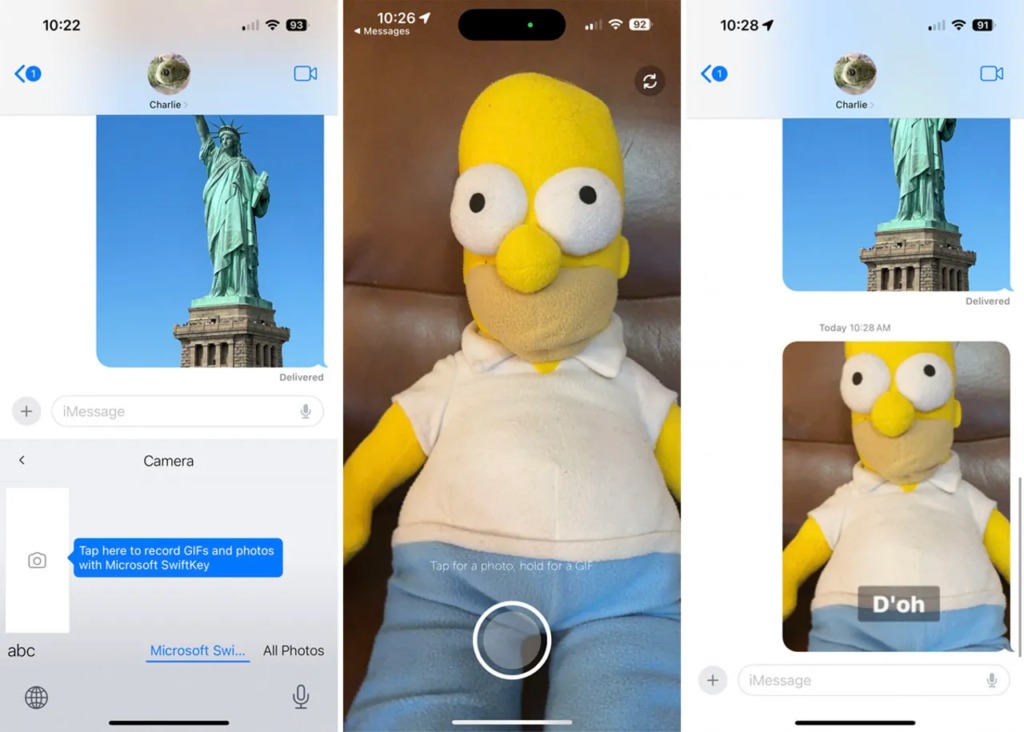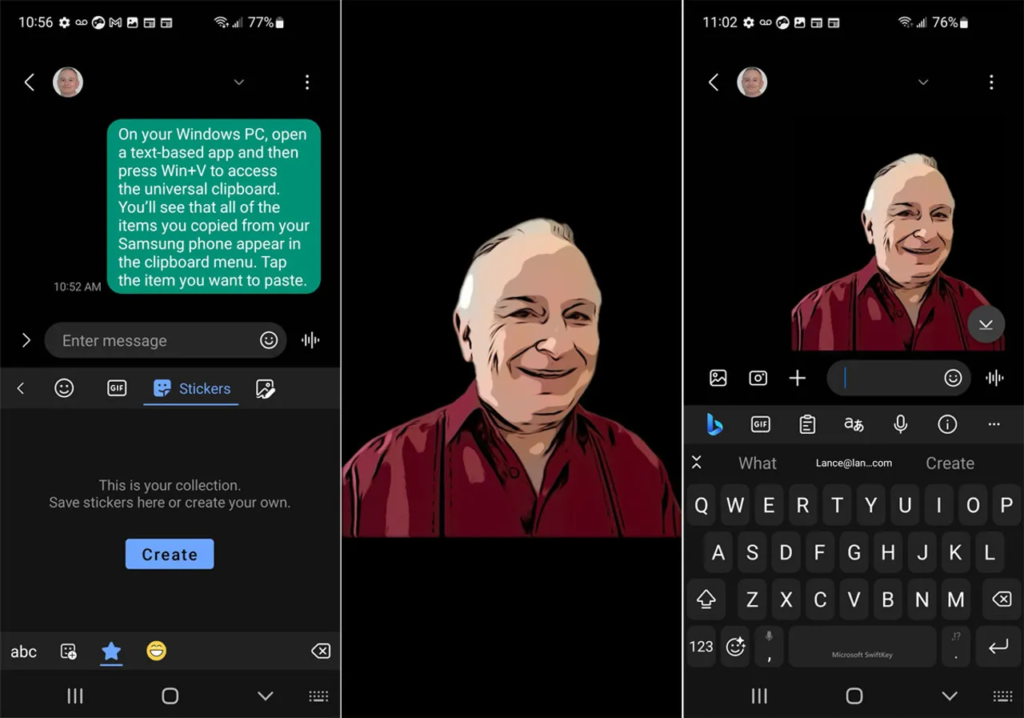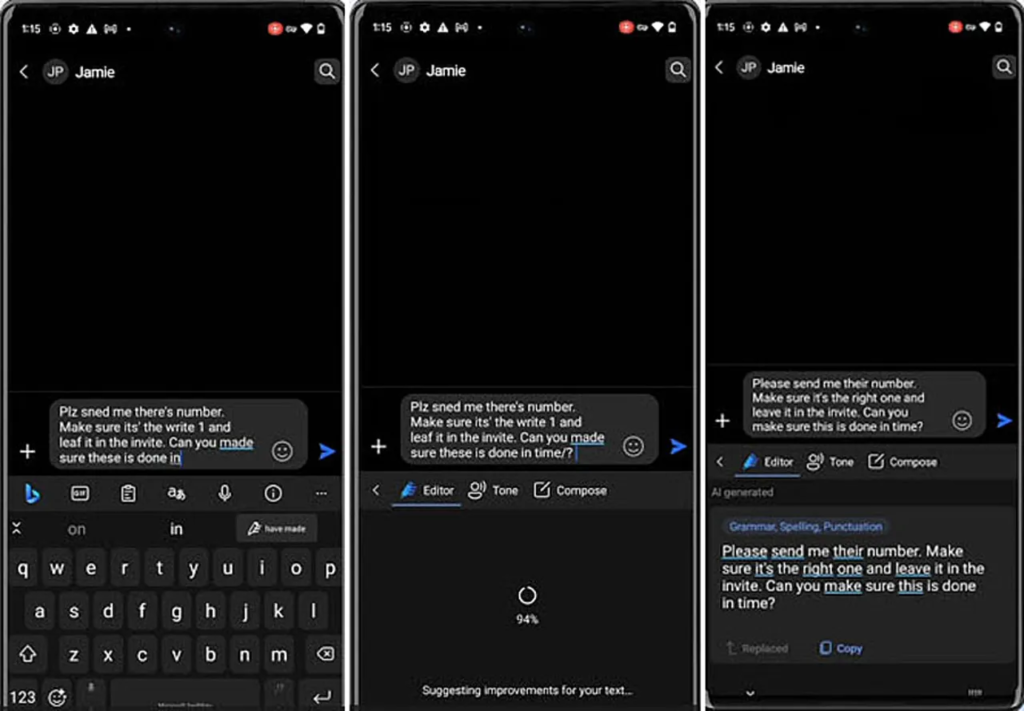Microsoft has announced a new set of AI-powered features for its SwiftKey keyboard app. The new features are designed to help users compose and spice up their text and images, and are now rolling out for iPhone, iPad, and Android devices.
Here is a more detailed look at the new features:
Bing AI image generator: This feature allows users to generate images using text descriptions. To use it, simply tap the Emoji icon in the Bing toolbar and then tap the Create icon. In the text field, describe the type of image you want created, and then tap the arrow to submit your request. You can then select one of the generated images and send it to your recipient.
AI camera lenses:

This feature allows users to create photos, videos, and GIFs with different effects. To use it, simply tap the icon with the four squares or the three dots to view all the available options and then select Camera. Tap the area indicated to record GIFs and photos with Microsoft SwiftKey. After the camera app opens, tap the shutter button to take a photo, or hold it down to create a GIF. When done, stop the recording. You can then add text and effects. When done, tap Save. Copy and paste your photo or GIF into the message and then send it.
Personalize stickers:

This feature allows users to create custom stickers from their own photos. To use it, tap the icon with the four squares or the three dots and select Stickers. If the new feature is accessible, you should see a button to Personalize Stickers. After you tap that button, the camera app opens where you can take a picture that is then turned into a sticker. Select the sticker to send it to someone.
Editor:

This feature acts as a type of virtual proofreader to check your grammar, spelling, and punctuation. To use it, simply highlight any sentence you’ve typed and then tap the Bing icon and choose the option for Editor. In response, the AI will offer feedback and suggestions to correct any mistakes or improve your writing style.
The new features are still rolling out, so you may not yet be able to access them on your phone or tablet. But they’re all part of Microsoft’s ongoing efforts to infuse AI into its products, both major and minor.

In addition to the new features, Microsoft is also continuing to improve the existing AI-powered features in SwiftKey. For example, the Bing AI chatbot can now provide more personalized suggestions, and the AI writing assistant can now help you to improve your writing style in more ways.
Overall, the new AI-powered features in SwiftKey are a welcome addition. They make it easier for users to compose and spice up their text and images, and they make SwiftKey an even more powerful tool for communication.

